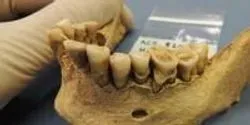Life Science

A Florida State University scientist is part of a team of researchers that has developed a non-invasive way to "light up" animal cells, a development that could significantly advance cell-based therapies and pave the way for more effective cancer research in the long run.

As stem cells continue their gradual transition from the lab to the clinic, a research group at the University of Wisconsin-Madison has discovered a new way to make large concentrations of skeletal muscle cells and muscle progenitors from human stem cells.

Using a powerful data-crunching technique, Johns Hopkins researchers have sorted out how a protein keeps defective genetic material from gumming up the cellular works. The protein, Dom34, appears to “rescue” protein-making factories called ribosomes when they get stuck obeying defective genetic instructions, the researchers report in the Feb. 27 issue of Cell.

In October 2013, Lab Manager, along with BUCHI Corporation, hosted a Product Spotlight webinar to discuss the various techniques that are in use for protein analysis.

After a decade of debate, Brandeis University scientists have a clear picture of a controversial protein.

University of Texas Southwestern Medical Center researchers created new nerve cells in the brains and spinal cords of living mammals without the need for stem cell transplants to replenish lost cells.














